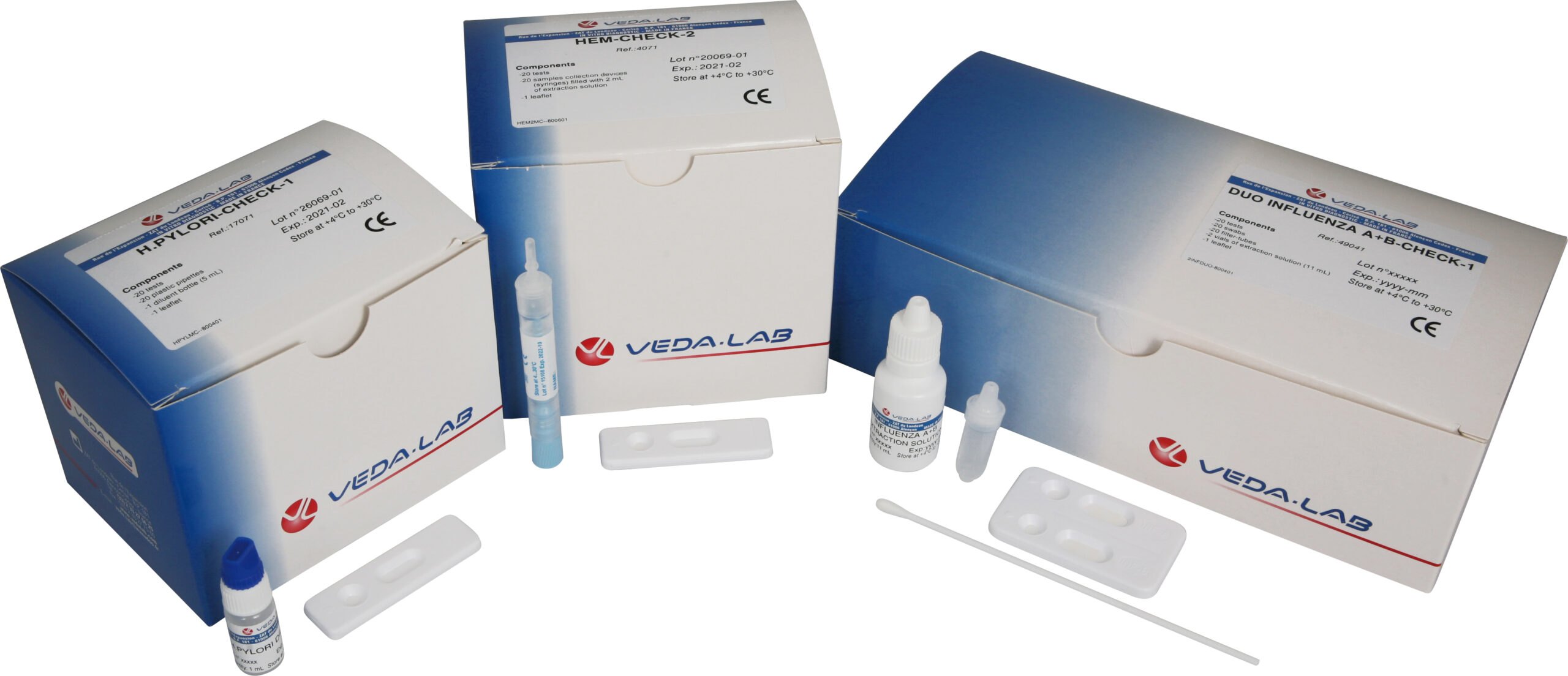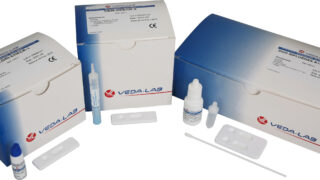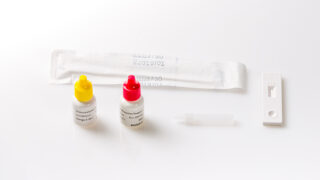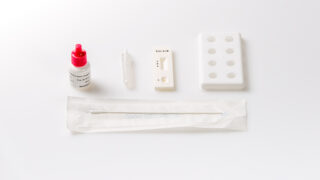Categories
CK-MB Rapid Test
The CK-MB test, or Creatine Kinase-MB test, is a commercially available diagnostic blood test used to measure the levels of a specific enzyme called creatine kinase-MB in the bloodstream. This test is primarily used to assess and diagnose heart muscle damage, such as during a heart attack.
Elevated CK-MB levels in the blood can indicate myocardial injury, as this enzyme is primarily found in the heart muscle. It is an important tool for healthcare professionals to help confirm or rule out acute coronary syndrome and other cardiac conditions.
Product information
CK-MB (Creatine Kinase (MB isoenzyme) test is a rapid qualitative assay for the detection of CK-MB in serum.
Advantages of CK-MB test
- Easy to perform
- No complex sample collection needed
- Accurate test result
General information
Creatine Kinase is a dimer occurring in various human tissues in three isoenzymic forms, depending on the particular combination of its non identical submits : BB (brain type), MM (skeletal type), and MB (hybrid type). Creatine Kinase-MB isoenzyme (CK-MB) is well-documented as maker for acute myocardial infarction (AMI). It is found in blood within 6 hours of myocardial necrosis and peaked in 13-15 hours with a typical range of 39-185 ng/mL. Elevated levels persist for 2-3 days after the onset of chest pain. The CK-MB check-1 is a rapid qualitative assay for the detection of CK-MB in serum. The method employs a unique combination of monoclonal-dye conjugate and polyclonal solid phase antibodies to identify CK-MB in the test samples with a high degree of specificity. As the test sample flows through the absorbent device, the labelled antibody-dye conjugate binds to the CK-MB forming an antibody-antigen complex. This complex binds to the anti-CK-MB antibody in the reaction zone and produces a pink-rose color band when CK-MB concentration is higher than 7 ng/mL. In the absence of CK-MB, there is no line in the reaction zone. The mixture continues flowing through the absorbent device past the reactive zone and control zone. Unbound conjugates binds to the reagents in the control zone, producing a pink-rose color band, demonstrating that the reagents are functioning correctly.
Test procedure
- Allow specimen and Myoglobin Rapid Test to come to room temperature prior to testing.
- Remove the reaction device from its protective wrapper by tearing along the split.
- Label device with the patient ‘s name or control number.
- Fill the serum dropper with specimen (serum or plasma) and by holding it vertically, dispense one drop (25 μL) into sample well. If whole blood is used, dispense 2 drops (50 μL) into the well and wait for the whole blood sample to be completely absorbed before adding diluent.
- Add exactly 5 or 6 full drops of diluent (200 μL) in the sample well.
- Read the results after 5 to 10 minutes.
Interpretation of the results
Negative result: One colored band appears in the control zone. No apparent band in the test zone.
Positive result:In addition to the control band a clearly distinguishable band also appears on the test zone.
Invalid result: If there is no distinct colored band visible the control zone, the test is inconclusive for the corresponding parameter. In this case, it is recommended that the test be repeated.
| Product name | CK-MB Rapid Test |
|---|---|
| Detection | Cardiac Marker CK-MB |
| Type | |
| Sample Type | |
| Pack Size | |
| Format | |
| Analyte Detection |
Related products
-
Medical Tests
CA-125 Rapid Test
Price requestCA-125 is a protein marker that can be measured rapidly with serum, plasma and whole blood. It is primarily used as a tumor marker, specifically for ovarian cancer. Elevated CA-125 levels can indicate the presence of ovarian cancer, but it can also be elevated in other conditions, such as endometriosis and certain noncancerous conditions. The CA-125 test is a valuable tool for healthcare professionals in screening, diagnosing, and monitoring ovarian cancer and other gynecological disorders.
-
Medical Tests
Legio/S. Pneumo Rapid Test
Price requestThe Legio/S. Pneumo Rapid Test is a diagnostic test designed for the rapid detection of Legionella Sero-Group pneumophila in water sources. This test is essential for quickly assessing the presence of this specific pathogen, which is associated with Legionnaires’ disease, in settings like hospitals, hotels, and industrial facilities. It allows for prompt action to ensure the safety of water systems and prevent potential outbreaks.
-
Medical Tests
Chlamydia Rapid Test
Price requestThe Chlamydia Test is a diagnostic test used to detect the presence of Chlamydia trachomatis, a common sexually transmitted infection (STI). This test is typically performed on urine or swab samples from the genital area. It is a critical tool for diagnosing chlamydia infections, which can lead to various health complications if left untreated. Timely testing and detection help individuals receive appropriate treatment and prevent the spread of the infection.
-
Medical Tests
Influenza A-B Rapid Test
Price requestThe Influenza A/B test is a diagnostic test used to detect the presence of influenza viruses, specifically Influenza A and Influenza B, in respiratory samples like nasal or throat swabs. The test is essential during flu seasons to confirm whether an individual has influenza and to distinguish between Influenza A and Influenza B strains. Accurate diagnosis helps guide treatment decisions and manage the spread of the flu, contributing to public health.

 Drug Test
Drug Test Heart Markers
Heart Markers Hormone Tests
Hormone Tests Medical Tests
Medical Tests Microbiology
Microbiology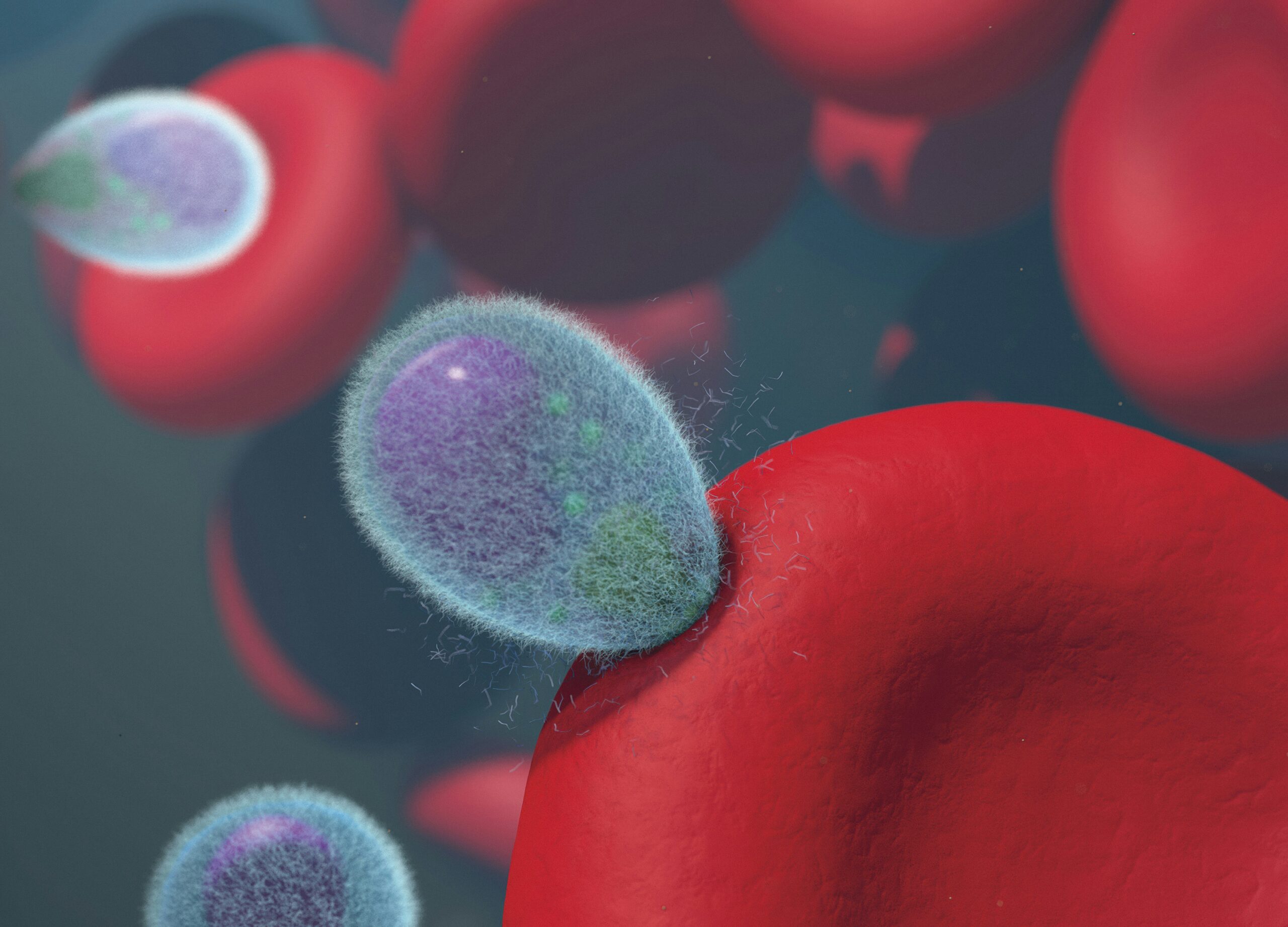 Parasite Infection
Parasite Infection Proteins and Inflammatory Markers
Proteins and Inflammatory Markers Qualitative Controls
Qualitative Controls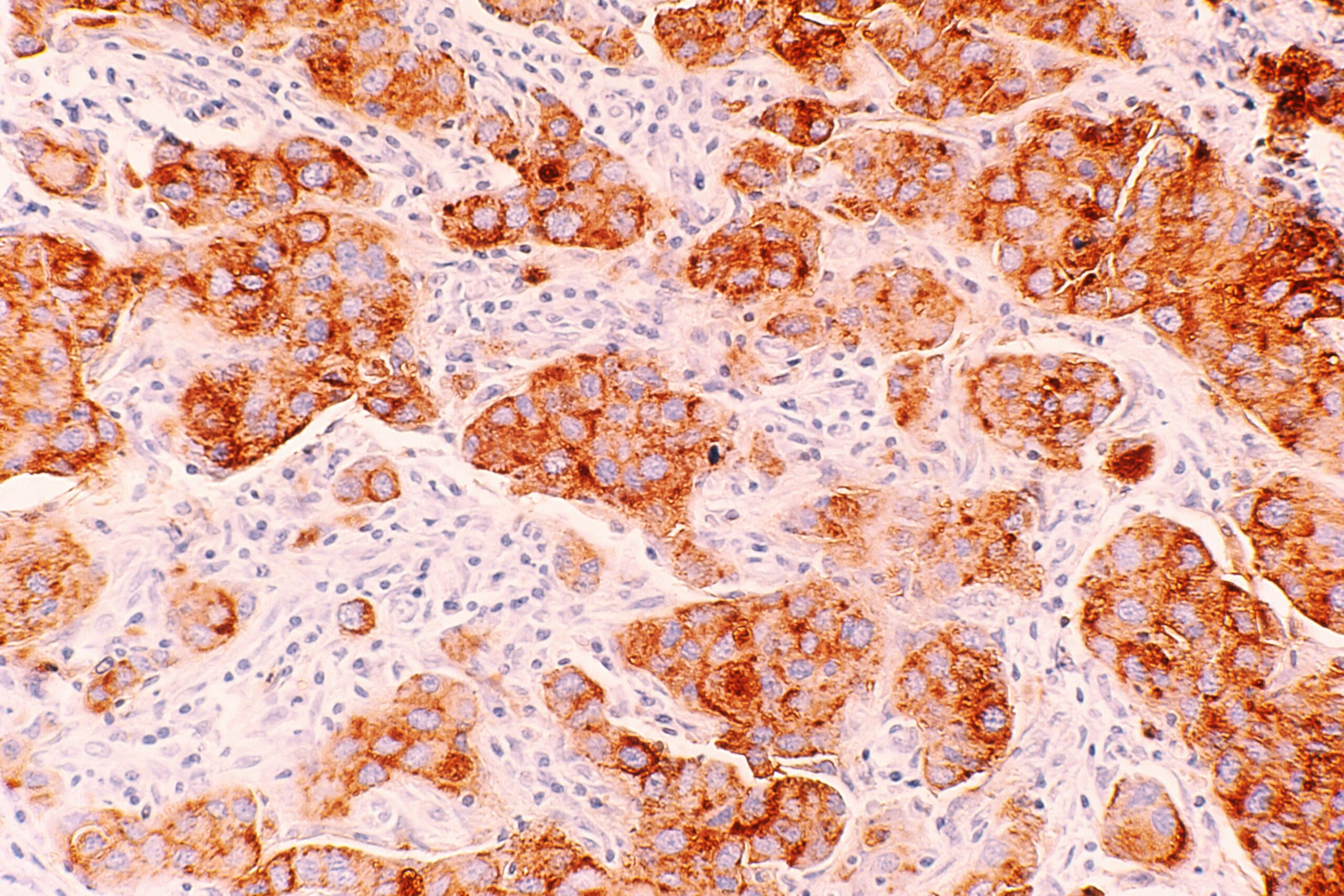 Tumor Marker
Tumor Marker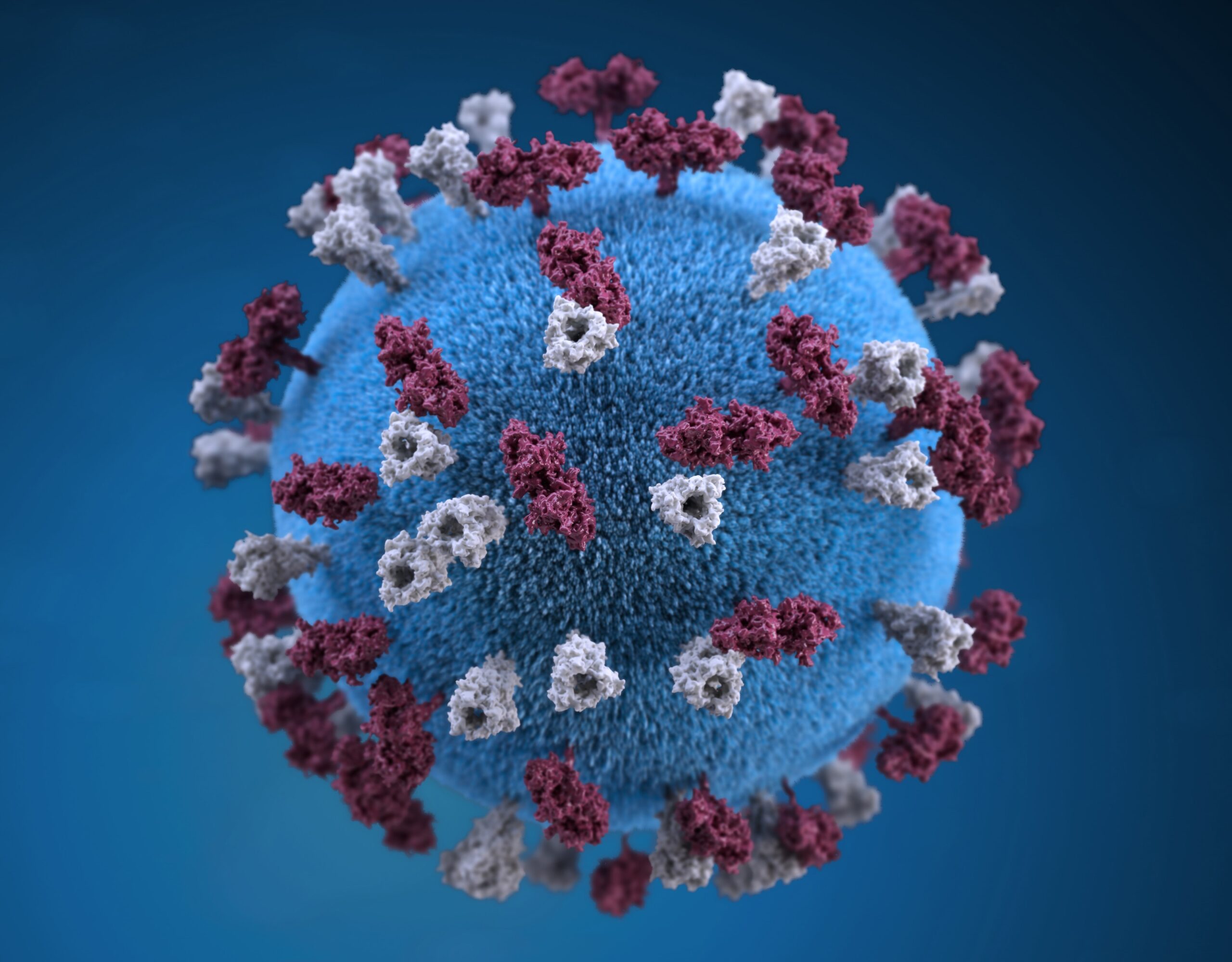 Viruses
Viruses